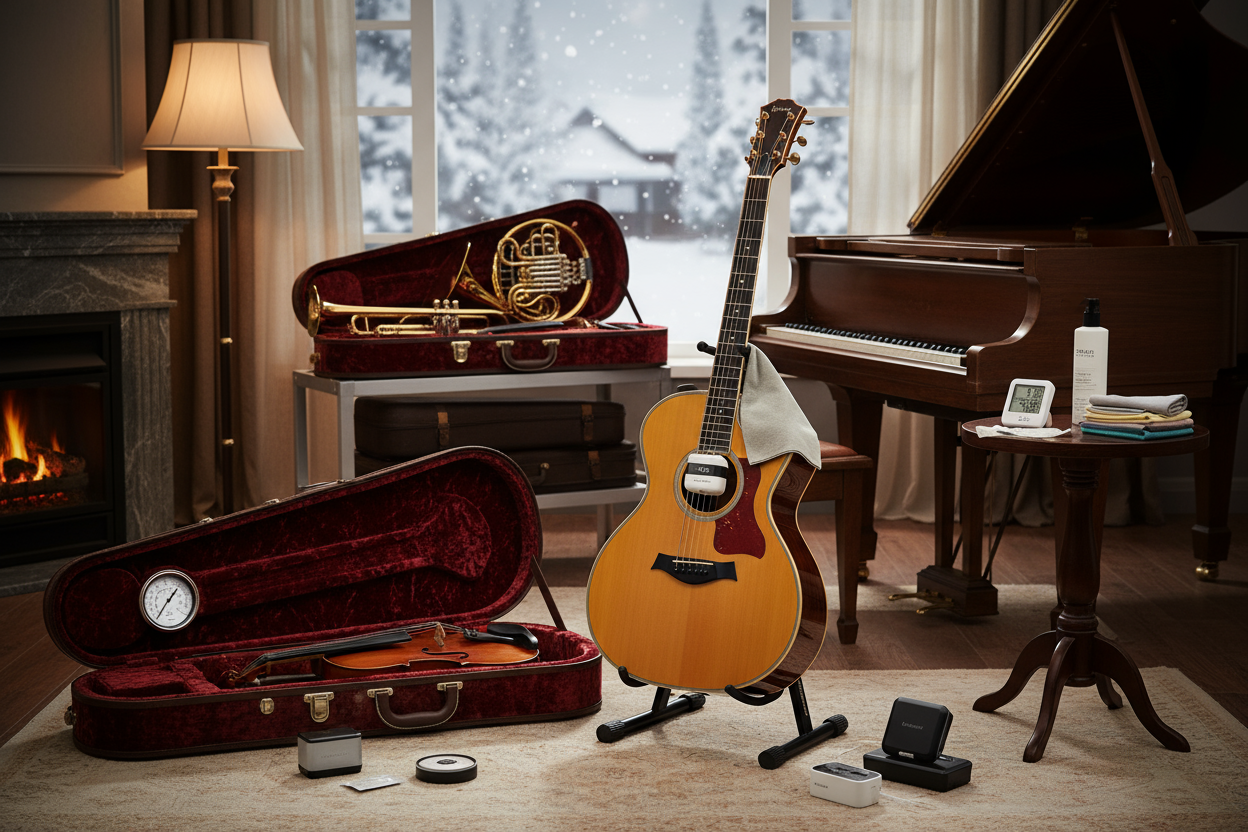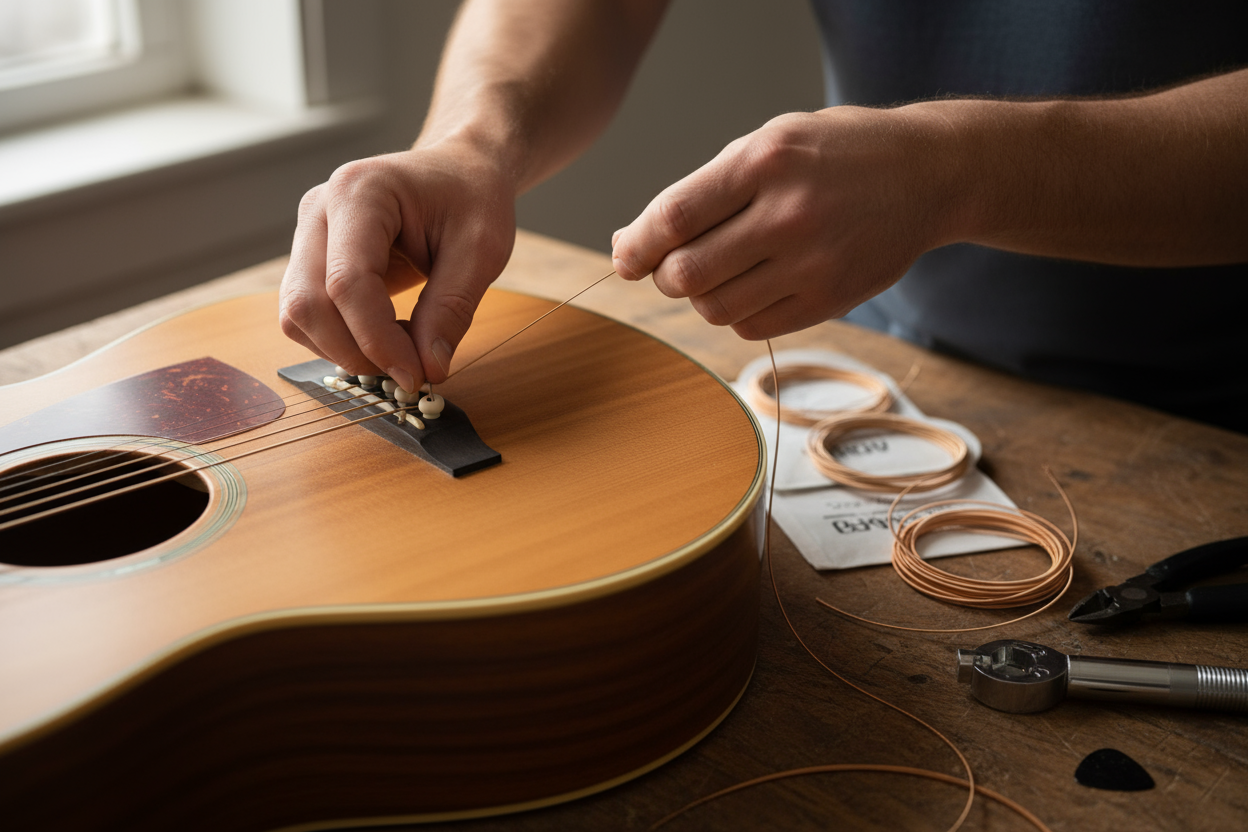How to Choose the Best Musical Instrument for Beginners: A Complete Guide
Starting your musical journey can be exciting yet overwhelming. Choosing an instrument that fits your personality, age, comfort, and musical preferences sets the stage for lasting motivation and joyful learning.
Key Takeaways
- Matching your instrument to your personality makes practice more enjoyable and expressive.
- Consider age and physical comfort to avoid frustration and injury.
- Let your favorite music genres guide your choice for sustained interest.
- Beginner-friendly instruments like ukulele and keyboard offer quick rewards.
- Consistent practice, small goals, and technology enhance motivation and progress.
Table of Contents
- 1. Why Choosing the Right Musical Instrument Matters for Beginners
- 2. Personality-Driven Instrument Choice: Find Your Perfect Match
- 3. Age and Physical Comfort: Choose an Instrument That Fits Your Stage and Strength
- 4. Genre Preferences: Let the Music You Love Lead the Way
- 5. Beginner-Friendly Instruments: Quick Wins That Keep You Motivated
- 6. Motivation and Practice Strategies: Make Music an Enjoyable Habit
- 7. Physical Considerations: Comfort Matters More Than You Think
- 8. Summary Table: Best Beginner Instrument Matches by Personality, Age, and Genre
- 9. Final Tips for Choosing Your First Instrument
1. Why Choosing the Right Musical Instrument Matters for Beginners
Your first instrument shapes your entire musical experience. Selecting one that fits your body, temperament, and tastes increases the chances you’ll keep playing. A good match feels comfortable, rewarding, and motivating—turning practice into pure enjoyment. On the other hand, a poor choice can lead to frustration and stalled progress.
The ideal beginner instrument is:
- Comfortable to hold and play
- Aligned with your favorite music genres
- Enjoyable and rewarding from the start
- A reflection of your personality and lifestyle
2. Personality-Driven Instrument Choice: Find Your Perfect Match
Choosing an instrument that resonates with your personality can transform practice from a chore into personal expression. Different temperaments tend to connect naturally with certain instruments.
For Introverts and Reflective Learners
- Piano/Keyboard: Ideal for analytical thinkers and creatives who enjoy structure and harmony. Offers solo versatility and a vast musical range.
- Violin: Appeals to meticulous learners who appreciate mastering technique and emotional nuance.
- Acoustic Guitar: Great for solo players who prefer calm, focused practice sessions.
For Outgoing and Expressive Personalities
- Electric Guitar: Excellent for those drawn to performance and energetic group settings across rock, pop, and blues genres.
- Trumpet or Saxophone: Perfect for bold, melodic expression in jazz and band environments.
- Drums: Suited to energetic players who thrive on rhythm and collaborative music-making.
For Gentle, Dreamy Types
- Flute: Lightweight and lyrical, ideal for classical or world music lovers.
- Harp: Offers a tranquil, meditative playing experience.
"Picking an instrument that resonates with your inner energy can make learning feel intuitive and deeply satisfying."
Learn more about personality matches here and here.
3. Age and Physical Comfort: Choose an Instrument That Fits Your Stage and Strength
Your size, age, and motor skills impact how easily you learn and enjoy an instrument. Comfort helps sustain your commitment and prevents injury.
For Young Children (Ages 3–6)
- Piano/Keyboard: Simple sound production, no finger strength needed, intuitive scale exploration.
- Ukulele: Lightweight, soft nylon strings, perfect for coordination development.
- Hand Drums: Natural introduction to rhythm and movement.
For Older Kids and Preteens (Ages 7+)
- Violin: Builds pitch control and discipline with guidance.
- Clarinet/Trumpet: Ideal for school bands, develops breath and finger control.
- Acoustic Guitar: Smaller sizes fit older kids ready for chords and melodies.
For Adults and Teens
- Piano/Keyboard: Adjustable seating, digital options, and headphones for comfort.
- Guitar (Acoustic or Electric): Choose based on hand size and music style.
- Ukulele: Easy, finger-friendly, perfect for quick progress.
Comfort Tips
- Try scaled-down instruments if you have smaller hands, like the ukulele or keyboards.
- Start with gradual practice for fine motor instruments like violin or flute.
- Test instruments in person to find what feels natural and avoids strain.
Discover more on age-appropriate choices here and beginner-friendly options here.
4. Genre Preferences: Let the Music You Love Lead the Way
Your favorite music style can guide your instrument selection and keep your enthusiasm high. Playing music you love makes practice feel meaningful.
Popular Genres and Their Instruments
- Rock: Electric guitar, bass, drums, keyboards
- Jazz: Saxophone, trumpet, piano, bass, drums
- Classical: Violin, cello, flute, piano, harp
- Hip-Hop: Keyboards, samplers, electronic controllers
- Blues: Guitar, harmonica, piano, bass
- Country: Slide guitar, fiddle, acoustic guitar, banjo
Piano: A Genre-Spanning Favorite
The keyboard is highly versatile, fitting into classical, jazz, pop, and electronic styles, making it a great foundation instrument.
5. Beginner-Friendly Instruments: Quick Wins That Keep You Motivated
Early success encourages continued practice. Instruments that allow you to play simple songs quickly boost motivation and confidence.
Why Many Beginners Choose the Ukulele or Keyboard
-
Ukulele
- Lightweight and gentle on the fingers
- Simple chords that are easy to learn
- Affordable and fun for singing along
-
Keyboard/Piano
- Clear key layout supports music theory learning
- Volume control and headphone options
- Many beginner apps and lessons available
Small step progress, learning one song or chord at a time, creates a rewarding feedback loop that keeps you engaged.
6. Motivation and Practice Strategies: Make Music an Enjoyable Habit
Consistent, mindful practice beats quantity. Building habits with short, frequent sessions makes learning less daunting and more sustainable.
Set Small, Achievable Goals
- Practice 20 minutes daily instead of one long weekly session.
- Use practice logs or apps to track progress.
- Celebrate milestones like learning your first song.
Use Technology to Stay Engaged
Try beginner apps like Yousician, Simply Piano, and others offering guided lessons and gamified learning.
Try Before Committing
- Take free trial lessons.
- Rent instruments before buying.
- Attend group workshops or open houses.
Consistency Makes the Difference
- Develops muscle memory
- Maintains enthusiasm through steady improvement
- Prevents injury by encouraging proper technique and pacing
7. Physical Considerations: Comfort Matters More Than You Think
Physical comfort directly impacts your ability to learn and enjoy playing. Selecting an instrument that suits your body prevents frustration and injury.
Hand Size and Strength
- Small hands may struggle with large guitars or wind instruments requiring wide reach.
- Start with compact instruments like the ukulele or digital keyboard.
Coordination and Dexterity Levels
- Violin and clarinet require fine finger precision and steady control.
- Drumming demands coordinated limb movement, stamina, and rhythm.
Tools for Comfort
- Adjustable benches and music stands promote correct posture.
- Digital instruments with headphone use create low-stress practice spaces.
- Wrist rests and ergonomic seating prevent pain during longer sessions.
Learn more about comfort-focused choices here.
8. Summary Table: Best Beginner Instrument Matches by Personality, Age, and Genre
| Personality | Recommended Instrument | Age Suitability | Comfort & Ergonomics | Genre Versatility | Motivation Tips |
|---|---|---|---|---|---|
| Thoughtful/Creative | Piano/Keyboard | Children–Adult | High (adjustable, digital) | Classical, jazz, pop | Visual tutorials, quick progress |
| Outgoing/Expressive | Ukulele, Guitar | Children–Adult | Very high (light, small) | Pop, folk, indie, rock | Learn fun songs early on |
| Detail-Oriented | Violin | Older children+ | Requires fine control | Classical, folk | Precision challenges keep focus |
| Gentle/Dreamy | Flute, Harp | Older children+ | Lightweight, melodic | Classical, world | Melodic flow enhances enjoyment |
9. Final Tips for Choosing Your First Instrument
- Test it first – Take free lessons, try rentals, or attend workshops to experience the instrument hands-on.
- Prioritize physical ease – Find an instrument that feels playable immediately to avoid frustration or pain.
- Follow your musical passions – Choose instruments aligned with the styles and sounds you love.
- Use learning apps and find community – Interactive tools and support networks keep practice fun and social.
- Set short-term goals – Maintain motivation with frequent, achievable milestones.
- Start with approachable options – Ukuleles and keyboards are excellent entry points for beginners.
Starting with the right instrument transforms your journey from a fleeting experiment into a lifelong joy.
FAQ
What is the easiest instrument to learn for beginners?
The ukulele and keyboard are considered some of the easiest instruments for beginners due to their simple chord structures and immediate sound production.
How do I choose an instrument based on my age?
Consider your physical size, hand strength, and coordination when choosing. Younger children benefit from smaller, lightweight instruments, while adults can opt for options with ergonomic features and adjustable settings.
Can personality really influence which instrument I should pick?
Yes. Instruments that match your temperament and energy can make practice feel more natural and enjoyable, increasing your chances to stick with learning.
Are there apps to help beginners practice?
Absolutely! Apps like Yousician, Simply Piano, and Flowkey provide guided lessons, instant feedback, and gamified learning to keep beginners engaged.
Is it better to buy or rent an instrument as a beginner?
Renting initially can be a smart choice to test your commitment and find which instrument suits you best before making a purchase.






